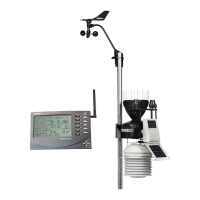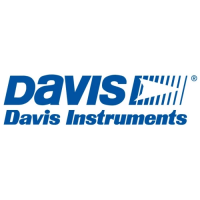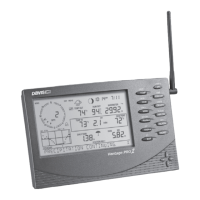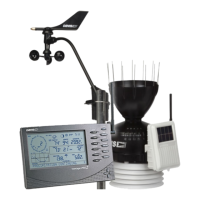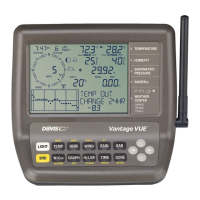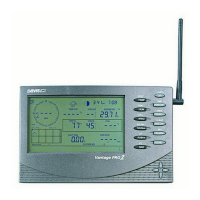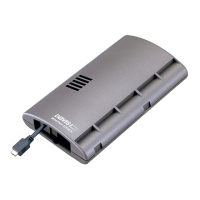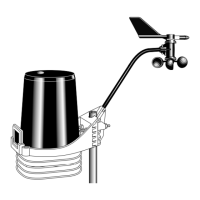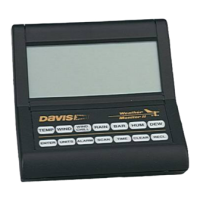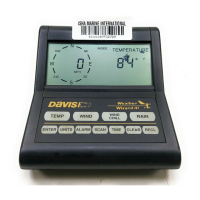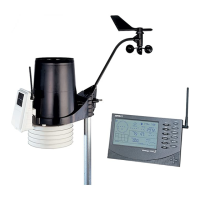RAIN COLLECTOR
You should clean your rain collector as often as necessary, but
at least once a year. For greatest accuracy, clean several times a
year.
Issue: Dust, debris such as leaves, insects, and bird droppings
can block the rain collector. Insect nests and webs can prevent
the tipping spoons from tipping.
Solution: Separate the cone from the base by turning it
counter-clockwise. Remove and clean the debris screen. Use a
soft, damp cloth to remove any debris from the cone and
tipping spoons. Be careful not to scratch the silver-colored
coating on the spoons. Use pipe cleaners to clean the funnel
hole in the cone and drain screens in the base. When all parts
are clean, rinse with clear water, and replace the cone and
debris screen.
Note: Cleaning the tipping spoons may cause false rain readings.
You can either unplug the rain sensor from the sensor interface
inside the transmitter shelter before cleaning or clear the false
data in the console after cleaning.
SOLAR RADIATION AND UV SENSORS
Issue: Dirt, dust or oil on the diffuser at the top of the sensor
can affect its accuracy.
Solution: As often as is practical, remove the dust from the
black plastic sensor housing with a soft dry brush. Clean the
white diffuser with a cloth or cotton swab dampened with
ethyl alcohol.
Note: Do not touch the small white diffusers on top of the sensors
with your fingers. Oil from skin reduces their sensitivity. If you are
concerned that you have touched the diffusers at any time, clean
the diffuser using ethyl alcohol with a soft cloth. DO NOT use
rubbing or denatured alcohols because they can affect accuracy
of the sensor readings. Ethyl alcohol can be found at industrial or
laboratory supply stores.
Issue: Accuracy may drift.
Solution: Due to the sensitivity of ultraviolet and solar
radiation sensors it is common practice for manufacturers to
recommend re-calibration after a period of time. Users
demanding high accuracy typically recalibrate their sensors
annually. Here at Davis Instruments, we have seen less than
2% drift per year on the readings from these sensors. Contact
Technical Support about returning your sensor for calibration.
Sensor readings should remain accurate within
specifications for several years. However, there may
be some drift over time. We expect that
recalibration will be needed as follows:
(CONTINUED)
CONTACTING DAVIS TECHNICAL SUPPORT
SENSOR RECALIBRATION
Caution: Never spray your sensor suite or any sensor with insecticides. Insecticides can damage the sensors or even the
radiation shield.
Davis Instruments, 3465 Diablo Avenue, Hayward, CA 94577-2778, USA • 510-732-9229 • www.davisnet.com
Online www.davisnet.com
support@davisnet.com
(510) 732-7814
Monday- Friday
7:00 A.M. to 5:30 P.M. Pacific Time
E-Mail
Telephone
• Outside Temp/HumSensor: every five years
• Solar Radiation Sensor: every four years
• UV Sensor: every three years

